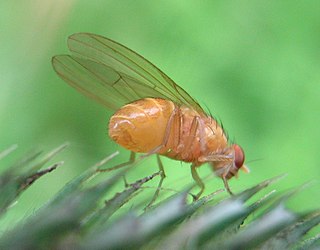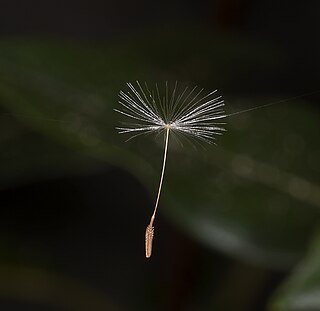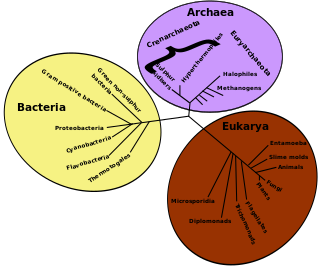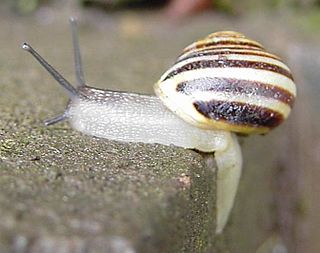
Biology – The natural science that studies life. Areas of focus include structure, function, growth, origin, evolution, distribution, and taxonomy.

Evolutionary biology is the subfield of biology that studies the evolutionary processes that produced the diversity of life on Earth. It is also defined as the study of the history of life forms on Earth. Evolution holds that all species are related and gradually change over generations. In a population, the genetic variations affect the phenotypes of an organism. These changes in the phenotypes will be an advantage to some organisms, which will then be passed on to their offspring. Some examples of evolution in species over many generations are the peppered moth and flightless birds. In the 1930s, the discipline of evolutionary biology emerged through what Julian Huxley called the modern synthesis of understanding, from previously unrelated fields of biological research, such as genetics and ecology, systematics, and paleontology.

In biology, polymorphism is the occurrence of two or more clearly different morphs or forms, also referred to as alternative phenotypes, in the population of a species. To be classified as such, morphs must occupy the same habitat at the same time and belong to a panmictic population.
Balancing selection refers to a number of selective processes by which multiple alleles are actively maintained in the gene pool of a population at frequencies larger than expected from genetic drift alone. Balancing selection is rare compared to purifying selection. It can occur by various mechanisms, in particular, when the heterozygotes for the alleles under consideration have a higher fitness than the homozygote. In this way genetic polymorphism is conserved.

Biological dispersal refers to both the movement of individuals from their birth site to their breeding site, as well as the movement from one breeding site to another . Dispersal is also used to describe the movement of propagules such as seeds and spores. Technically, dispersal is defined as any movement that has the potential to lead to gene flow. The act of dispersal involves three phases: departure, transfer, settlement and there are different fitness costs and benefits associated with each of these phases. Through simply moving from one habitat patch to another, the dispersal of an individual has consequences not only for individual fitness, but also for population dynamics, population genetics, and species distribution. Understanding dispersal and the consequences both for evolutionary strategies at a species level, and for processes at an ecosystem level, requires understanding on the type of dispersal, the dispersal range of a given species, and the dispersal mechanisms involved. Biological dispersal can be correlated to population density. The range of variations of a species' location determines expansion range.

Evolutionary ecology lies at the intersection of ecology and evolutionary biology. It approaches the study of ecology in a way that explicitly considers the evolutionary histories of species and the interactions between them. Conversely, it can be seen as an approach to the study of evolution that incorporates an understanding of the interactions between the species under consideration. The main subfields of evolutionary ecology are life history evolution, sociobiology, the evolution of interspecific interactions and the evolution of biodiversity and of ecological communities.
Arthur James Cain FRS was a British evolutionary biologist and ecologist. He was elected a Fellow of the Royal Society in 1989.

The grove snail, brown-lipped snail or lemon snail is a species of air-breathing land snail, a terrestrial pulmonate gastropod mollusc.

Phenotypic plasticity refers to some of the changes in an organism's behavior, morphology and physiology in response to a unique environment. Fundamental to the way in which organisms cope with environmental variation, phenotypic plasticity encompasses all types of environmentally induced changes that may or may not be permanent throughout an individual's lifespan.

Crepis, commonly known in some parts of the world as hawksbeard or hawk's-beard, is a genus of annual and perennial flowering plants of the family Asteraceae superficially resembling the dandelion, the most conspicuous difference being that Crepis usually has branching scapes with multiple heads. The genus name Crepis derives from the Greek krepis, meaning "slipper" or "sandal", possibly in reference to the shape of the fruit.
Sensory ecology is a relatively new field focusing on the information organisms obtain about their environment. It includes questions of what information is obtained, how it is obtained, and why the information is useful to the organism.

Evolutionary mismatch is the evolutionary biology concept that a previously advantageous trait may become maladaptive due to change in the environment, especially when change is rapid. It is said this can take place in humans as well as other animals.

In ecology, a community is a group or association of populations of two or more different species occupying the same geographical area at the same time, also known as a biocoenosis, biotic community, biological community, ecological community, or life assemblage. The term community has a variety of uses. In its simplest form it refers to groups of organisms in a specific place or time, for example, "the fish community of Lake Ontario before industrialization".

Cepaea is a genus of large air-breathing land snails, terrestrial pulmonate gastropod molluscs in the family Helicidae. The shells are often brightly coloured and patterned with brown stripes. The two species in this genus, C. nemoralis and C. hortensis, are widespread and common in Western and Central Europe and have been introduced to North America. Both have been influential model species for ongoing studies of genetics and natural selection. Like many Helicidae, these snails use love darts during mating.

The medium ground finch is a species of bird in the family Thraupidae. It is endemic to the Galapagos Islands. Its primary natural habitat is tropical shrubland. One of Darwin's finches, the species was the first which scientists have observed evolving in real-time.
An extreme environment is a habitat that is considered very hard to survive in due to its considerably extreme conditions such as temperature, accessibility to different energy sources or under high pressure. For an area to be considered an extreme environment, it must contain certain conditions and aspects that are considered very hard for other life forms to survive. Pressure conditions may be extremely high or low; high or low content of oxygen or carbon dioxide in the atmosphere; high levels of radiation, acidity, or alkalinity; absence of water; water containing a high concentration of salt; the presence of sulphur, petroleum, and other toxic substances.

Urban wildlife is wildlife that can live or thrive in urban/suburban environments or around densely populated human settlements such as townships.
Ecomorphology or ecological morphology is the study of the relationship between the ecological role of an individual and its morphological adaptations. The term "morphological" here is in the anatomical context. Both the morphology and ecology exhibited by an organism are directly or indirectly influenced by their environment, and ecomorphology aims to identify the differences. Current research places emphasis on linking morphology and ecological niche by measuring the performance of traits associated behaviours, and fitness outcomes of the relationships.

Soundscape ecology is the study of the acoustic relationships between living organisms, human and other, and their environment, whether the organisms are marine or terrestrial. First appearing in the Handbook for Acoustic Ecology edited by Barry Truax, in 1978, the term has occasionally been used, sometimes interchangeably, with the term acoustic ecology. Soundscape ecologists also study the relationships between the three basic sources of sound that comprise the soundscape: those generated by organisms are referred to as the biophony; those from non-biological natural categories are classified as the geophony, and those produced by humans, the anthropophony.
Urban evolution refers to the heritable genetic changes of populations in response to urban development and anthropogenic activities in urban areas. Urban evolution can be caused by mutation, genetic drift, gene flow, or evolution by natural selection. Biologists have observed evolutionary change in numerous species compared to their rural counterparts on a relatively short timescale.














